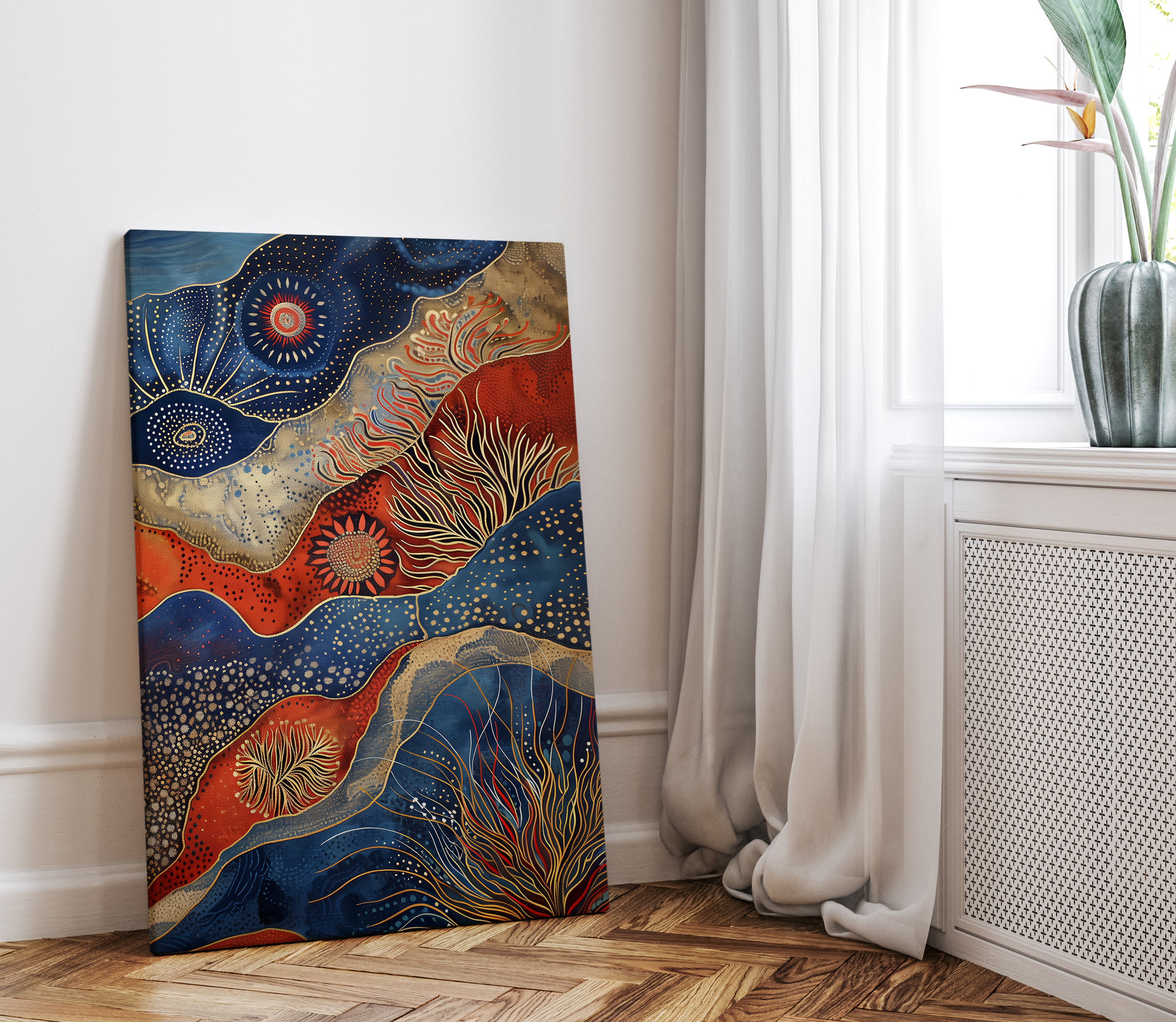
Aboriginal Australian art is a rich and vibrant expression of one of the world’s oldest living cultures. With its deep spiritual roots, unique techniques, and symbolic meanings, this art form provides a profound insight into the traditions, beliefs, and histories of Australia’s Aboriginal peoples. This guide aims to unravel the complexities of Aboriginal Australian art, offering an overview of its significance, styles, and impact.
Historical Context and Cultural Significance
Aboriginal Australian art dates back over 60,000 years, making it one of the oldest continuous art traditions in the world. The art is not merely decorative but serves as a means of recording and passing down knowledge, stories, and cultural practices. It encompasses a variety of forms, including rock art, bark paintings, and contemporary pieces, all deeply intertwined with the spiritual and cultural life of Aboriginal communities.
Core Themes and Symbols
Central to Aboriginal art is its connection to the Dreamtime, or Tjukurrpa, which refers to the creation era when ancestral beings shaped the world. Artworks often depict the Dreamtime stories, featuring symbols and patterns that represent various aspects of the natural world and spiritual beliefs. Common symbols include:
- Circle: Represents waterholes or sacred sites.
- U-Shape: Indicates human figures or tracks.
- Wavy Lines: Symbolize water or movement.
- Dot Patterns: Often used to map landscapes and depict ceremonial designs.
These symbols are not arbitrary but hold specific meanings that are passed down through generations, providing insights into the Aboriginal way of life and their connection to the land.
Traditional Techniques
Traditional Aboriginal art techniques vary across regions but often include:
- Dot Painting: Involves creating intricate patterns using dots of color. This technique, popularized by artists from the Central and Western Desert regions, is used to convey complex stories and ancestral connections.
- Bark Painting: Originates from the Northern Territory, where artists use natural pigments to create designs on eucalyptus bark. These paintings often illustrate Dreamtime stories and local flora and fauna.
- Rock Art: One of the oldest forms of Aboriginal art, found in various locations across Australia. Rock art includes engravings and paintings that document historical events, spiritual beliefs, and social practices.
Contemporary Interpretations
In recent decades, Aboriginal art has evolved and adapted to contemporary contexts while maintaining its traditional roots. Modern Aboriginal artists blend traditional techniques with contemporary styles, exploring new mediums such as printmaking, sculpture, and digital art. This fusion creates a dynamic dialogue between ancient traditions and modern aesthetics, bringing Aboriginal art to a global audience.
The Role of Art in Social and Political Activism
Aboriginal art also plays a crucial role in social and political activism. Through their work, Aboriginal artists address issues such as land rights, cultural preservation, and social justice. Art becomes a powerful tool for raising awareness and fostering dialogue about the challenges faced by Aboriginal communities.
Collecting and Supporting Aboriginal Art
If you are interested in collecting Aboriginal art, it is essential to approach it with respect and understanding. Ensure that you purchase from reputable sources that support Aboriginal artists and communities. Consider attending exhibitions, supporting local galleries, and learning about the artists and their stories.
The Future of Aboriginal Art
As Aboriginal art continues to gain recognition and appreciation worldwide, it faces both opportunities and challenges. The ongoing effort to preserve traditional practices while embracing contemporary innovation will shape the future of Aboriginal art. Supporting this art form not only enriches our understanding of Aboriginal cultures but also contributes to the sustainability and growth of this vital artistic tradition.
Aboriginal Australian art is a testament to the enduring creativity and cultural richness of Australia’s Indigenous peoples. By exploring its historical roots, symbolic meanings, and contemporary expressions, we gain a deeper appreciation for this remarkable art form. Whether through traditional paintings or modern interpretations, Aboriginal art offers a window into a world of profound spiritual and cultural significance.
For those interested in delving further into Aboriginal art, visiting exhibitions, engaging with artists, and supporting ethical practices are excellent ways to contribute to the appreciation and preservation of this extraordinary heritage.





